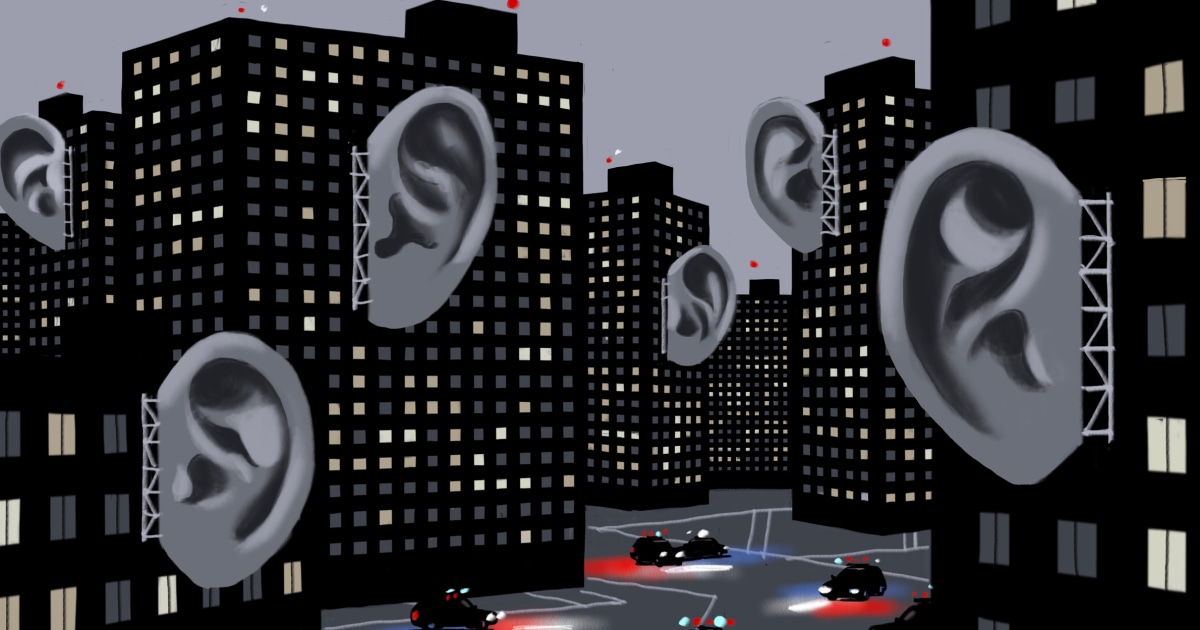
A publicly traded company based in Newark, California, ShotSpotter has contracts to provide gunfire-finding devices by subscription to about 120 American police agencies, which pay $65,000 to $90,000 a year for each square mile of service. ShotSpotter is the country’s best-known maker of gunshot detection technology and dominates the market.
The company’s stock price has declined since the summer amid criticism that its technology does little to curb crime, costs too much and could lead to excessive police responses in Black and Latino communities. The company, which was on pace to bring in revenues of about $60 million in 2021, has spent more than $1 million on legal fees and public relations efforts, which ShotSpotter expects to wipe out any profits from last year, according to its financial statements.
In the face of these challenges, ShotSpotter is fighting to retain customers and draw in new ones by steering federal grants to police departments and firing back against criticism with campaigns to defend its reputation and bottom line, NBC News found. The reporting is based on publicly available information about ShotSpotter, including corporate filings, marketing materials and lobbying records, as well as hundreds of pages of contracts, grant applications, emails and other documents obtained through public records requests.
In at least three cases, the company offered to prepare a police department’s application for a federal grant and get letters of support from other government officials.
ShotSpotter also advises police departments on how to respond to requests from the public and the media for records involving the company. In contracts, ShotSpotter often restricts the information police can release without asking the company first.
ShotSpotter’s efforts have been effective. It continues to win contracts in cities — including a new deal in Houston and renewals in New York, Denver and Pittsburgh in the last year — where elected leaders feel compelled to combat spikes in gun violence. Police in these cities endorse the company, saying it helps them get to shooting scenes faster, find evidence and give a more detailed picture of where gunfire is happening.
But the company’s tactics have drawn concern from some civil liberties advocates and policing experts who say it is pushing law enforcement agencies to embrace expensive technology without enough proof from researchers that it curbs crime.
The use of federal grants makes it easy to “throw a whole lot of money at technology,” said Matthew Guariglia, a policy analyst at the Electronic Frontier Foundation, a digital rights nonprofit group that wants cities to drop contracts with ShotSpotter. “It doesn’t matter if the stuff works or not,” he said.
Dan Auble, a senior researcher at OpenSecrets, which tracks money in U.S. politics and its effect on elections and public policy, said ShotSpotter’s use of federal money as part of its sales strategy reminded him of commercials for mobility scooters that say they can be covered by Medicare. In ShotSpotter’s case, the company has “created a market for themselves via federal money” by pitching the grants as a way for police departments to afford the technology, he said.
“It’s an example of a moneyed interest being able to use that money to leverage a benefit to their business,” he said.
ShotSpotter says its technology is accurate and helps police save lives and arrest shooters, which makes cities safer.
In response to questions, ShotSpotter released a statement comparing its gunshot detection devices to the 911 system, noting that once officers get to the scene of a shooting, there are often obstacles to collecting evidence, which might prevent an arrest. That’s standard for police work and doesn’t indicate a flaw in ShotSpotter’s technology, the company said.
Company executives say their sales and lobbying strategy aims to help police departments overcome the biggest obstacle to obtaining the technology — money — by connecting them with federal grants. Many police departments don’t have anyone with grant application experience on staff.
“So we fill the gap. We provide assistance,” Sam Klepper, ShotSpotter’s senior vice president of marketing and product strategy, said in a recent interview.
Klepper said that the company has spent more on marketing, public relations and sales in recent months. “We have taken heat in terms of some of the false accusations and we have spent more money than expected to fight, get the facts out about our company, get the truth out,” Klepper said.
He added that Shotspotter encourages police and others who “understand the value” of its technology to come to the company’s defense. He said clients “had no restrictions” on their ability to speak about ShotSpotter’s impact on gun violence, but they cannot share detailed data, which the company owns, with the media or outside groups, because the company wants to reserve the option to sell the data. He also touted the results of a recent poll showing gunshot detection technology generally enjoys public support.
“There’s a reality, and there’s a perception, and we’re just trying to make sure that the reality is known by the people who matter,” Klepper said.
Questions about the technology
ShotSpotter, born in Silicon Valley in the 1990s as a response to a nationwide surge in gun violence, has expanded through word of mouth within law enforcement circles: Police tell other police they like it, leading more police to seek it out.
The company also employs former law enforcement officials — including ex-members of the Bureau of Alcohol, Tobacco, Firearms and Explosives — as part of its “customer success” team, which helps clients use its products and deal with problems. Many of Shotspotter’s clients routinely share in press releases when the company’s technology played a role in their response to a shooting, helping expand its name recognition.
The higher profile has also brought criticism.
In Chicago, the MacArthur Justice Center and the city’s Office of Inspector General last year released studies of police data saying ShotSpotter alerts rarely led to evidence of a gun crime and made officers more apt to stop and search people. The MacArthur study also said ShotSpotter alerts focused “almost exclusively” in Black and Latino communities.
Source: | This article originally belongs to Nbcnews.com









